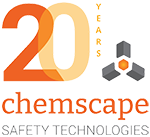SDS Language Regulations for Employers Across Canada
April 29, 2019

Chemscape’s SDS data entry and customer support department is requested to obtain SDSs in French and English for some employers. Chemscape is often asked by customers - what is the specific language requirements for the province or territory that my employees work in? It can be confusing to sort out the landscape if you have operations in different provinces or if you are a USA owned business with a subsidiary location in Canada.
The answer is regulatory requirements for French Safety Data Sheets differ slightly by Canadian provinces and territorial jurisdiction. Only Federally regulated employers have a requirement for organizations to have an SDS in both English and French. Federally regulated workplaces include Federal government employees and industries/businesses such as railway and air transportation.
Most organizations are regulated by their provincial / territorial OHS legislation so you need to look at the provincial Occupational Health and Safety Codes for your location. There is a few variances depending on where your employees work.
Quebec’s Occupational Health and Safety regulations require SDSs, labels, and signs to be provided in French. There is no specific requirement to provide an English SDS, label, or sign but employers should be obtaining them if they have workers requiring English copies who cannot read French.
Quebec’s Act Respecting Occupational Health and Safety (AROHS) (R.S.Q., c. S-2.1) states:
62.4. The label, sign and safety data sheet concerning a hazardous product must be in French. The French text may be accompanied with one or several translations.
All other Canadian provinces and territories do not have regulatory language that specifically requires them to retain an SDS in English and French. With the exception of federally regulated workplaces and Quebec our observation is business in most provinces keep a record of SDSs only in English.
However, some companies, especially in provinces such as New Brunswick which has many bilingual employees, do retain SDSs in both languages and other languages as needed by their workforce. This allows for effective hazard communication and the safety of those who are working with hazardous chemicals.
If a complaint is made or an issue is found during an inspection where there are French (or English in Quebec) speaking employees who would require these documents, a request can be made by the inspecting OHS Officer for the company to obtain them. Officers can issue orders under the Hazardous Products Regulations (HPR) to resolve issues related to the language of the SDSs provided.
Hazardous Products Regulations states:
6.2 (1) The information elements provided on a safety data sheet and on a label must be in both official languages of Canada.
All this information is put together in a chart by Chemscape on Canada’s WHMIS 2015 language and SDS updating guidelines for employers.
It is also important to note that some Canadian workplaces may have other languages and situations where the majority of employees have no or little English or French. Providing hazard communication and training in a language that employees understand is ideal.



